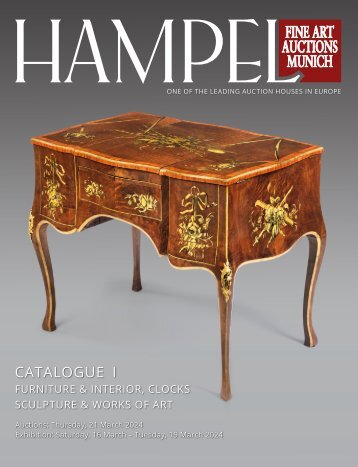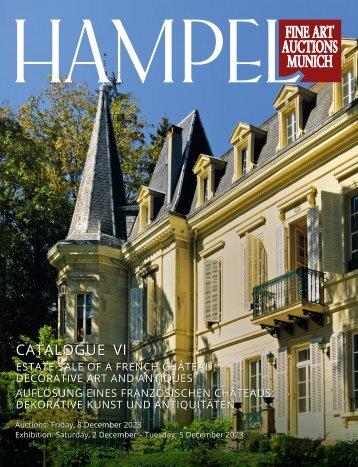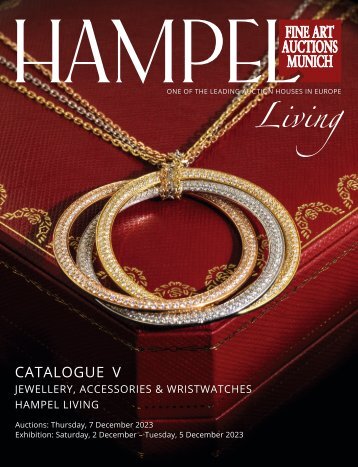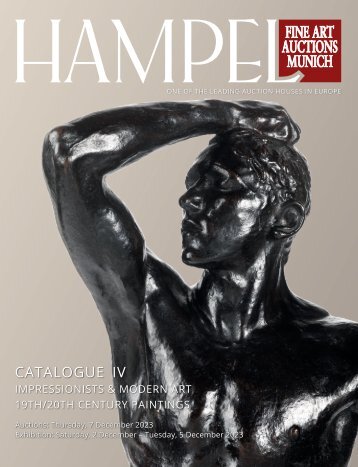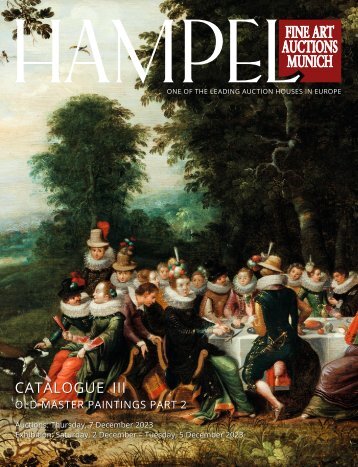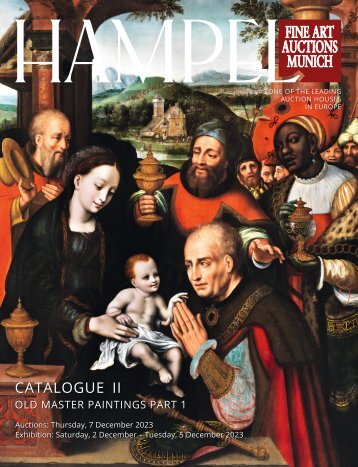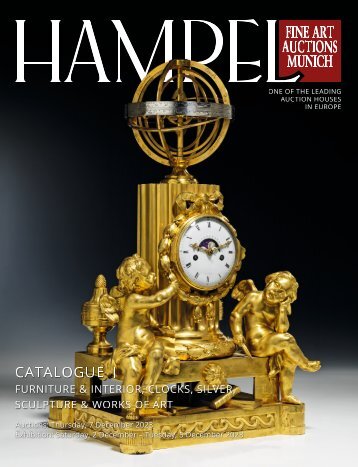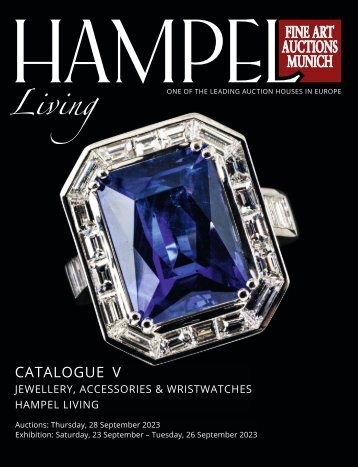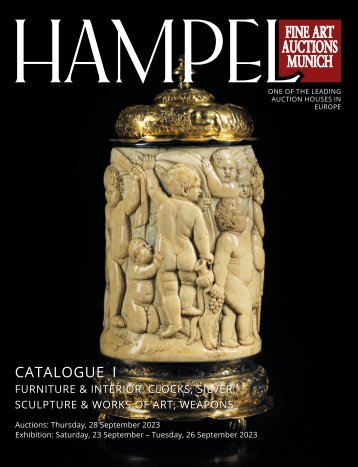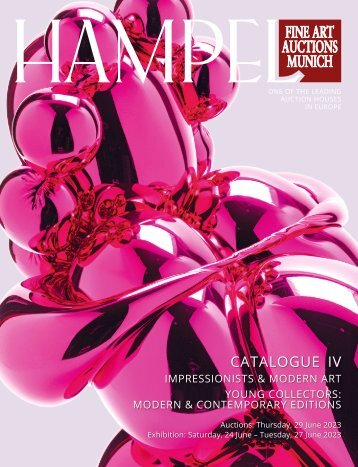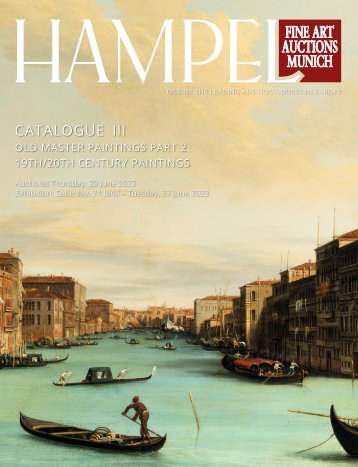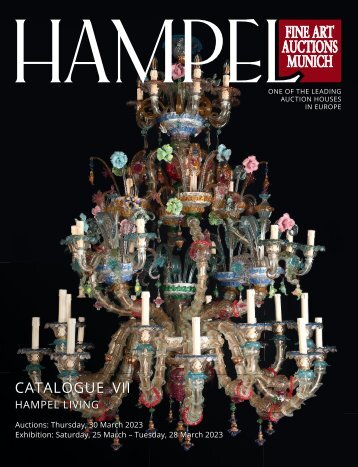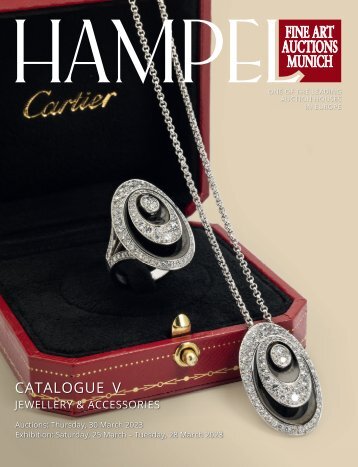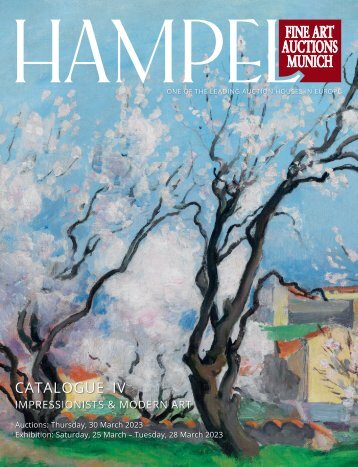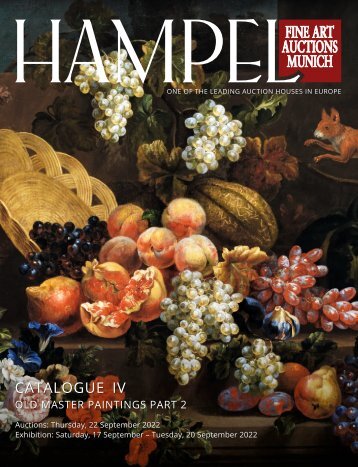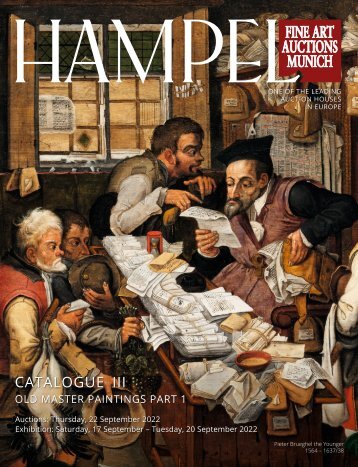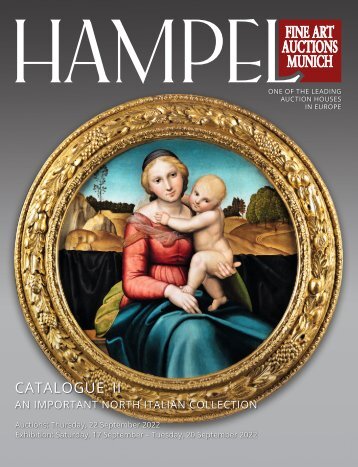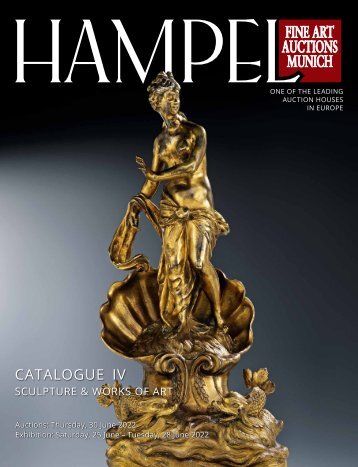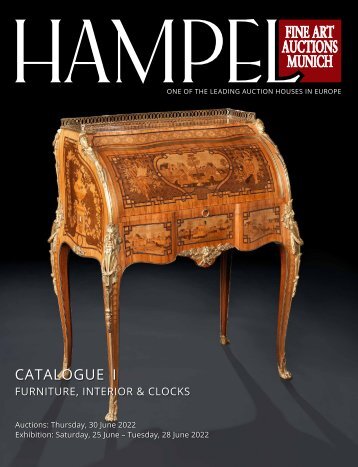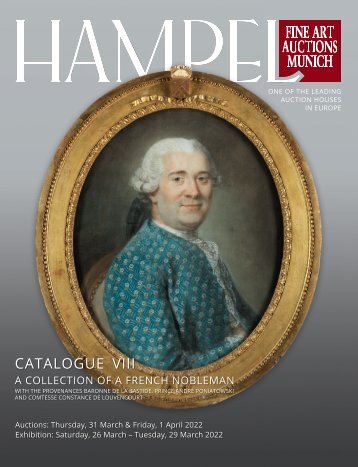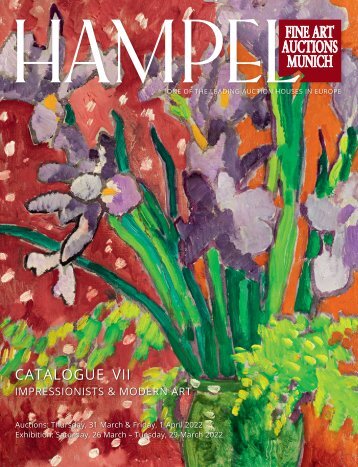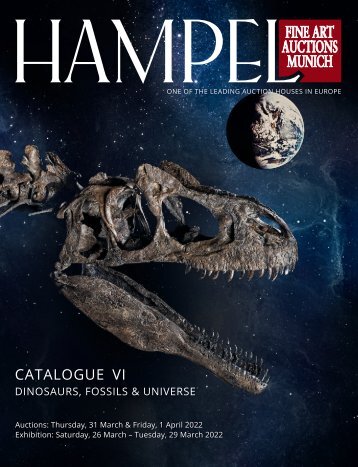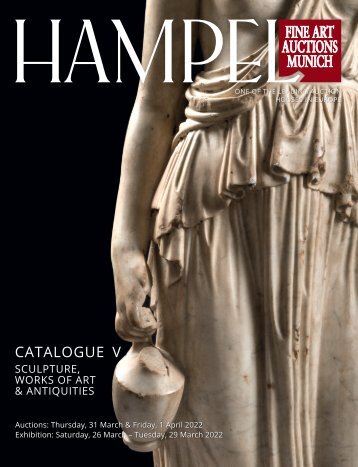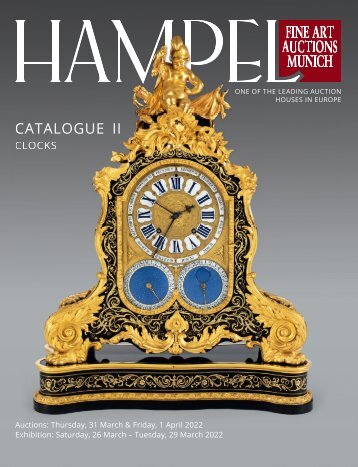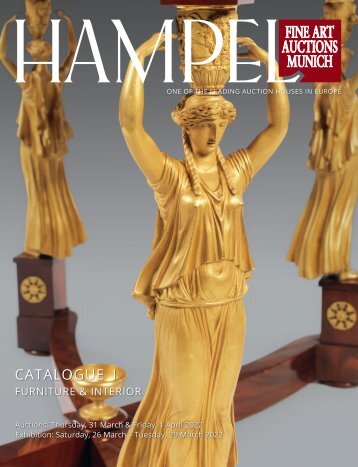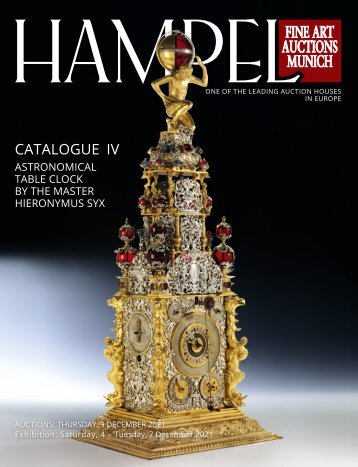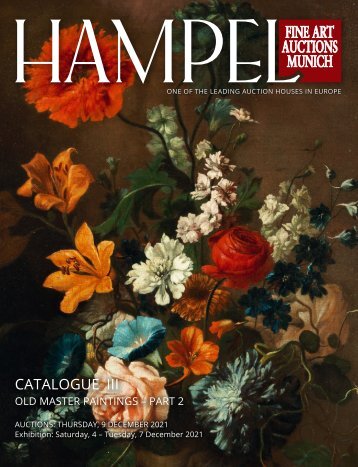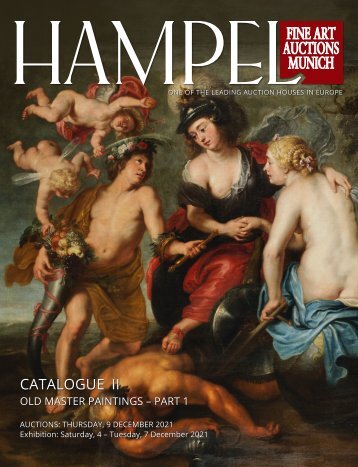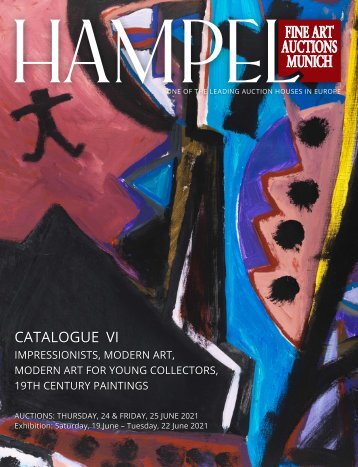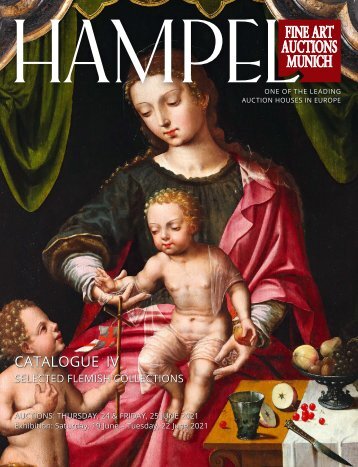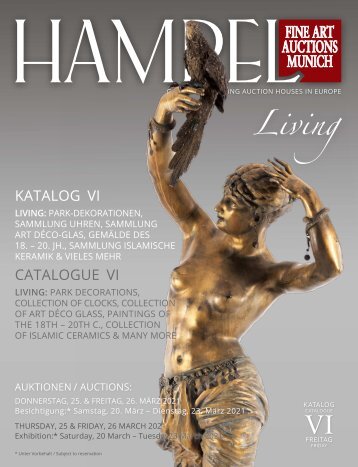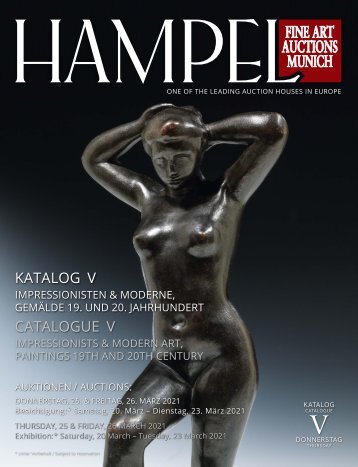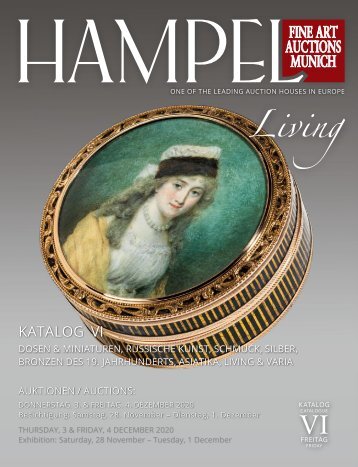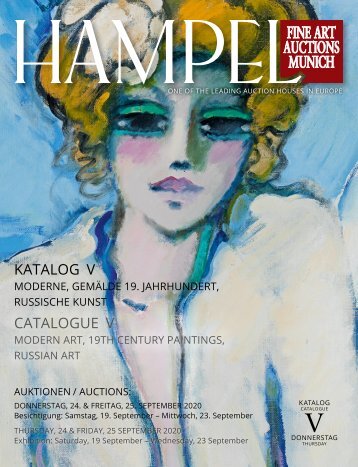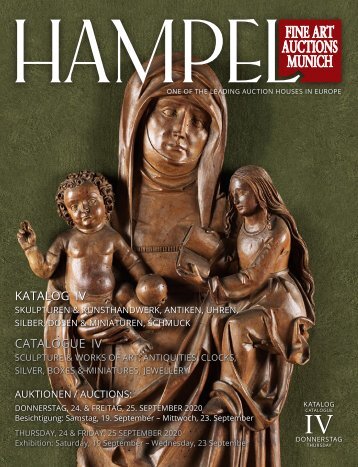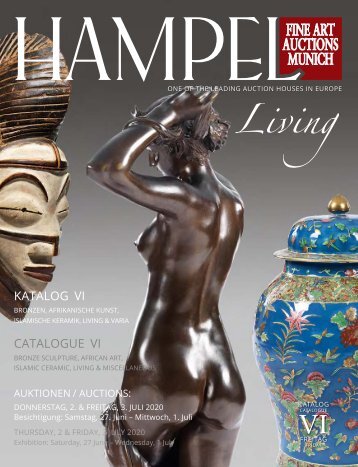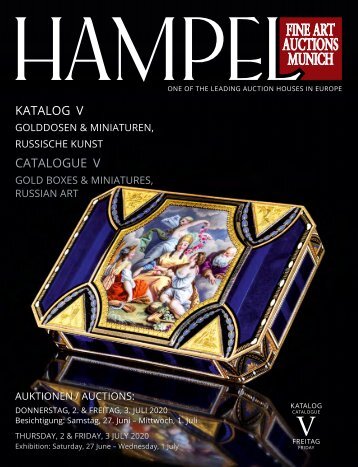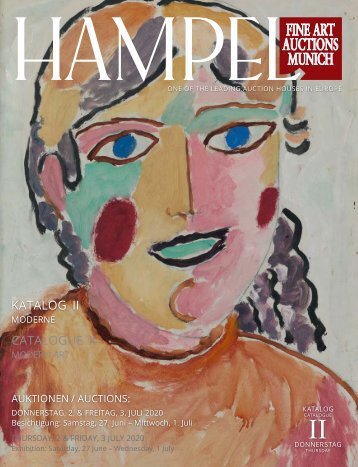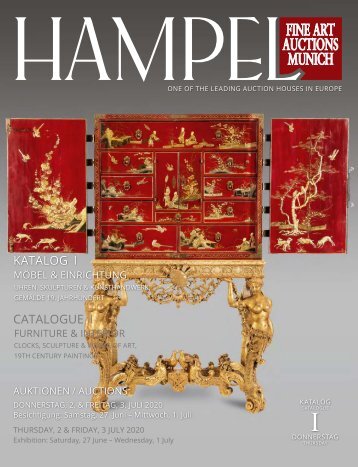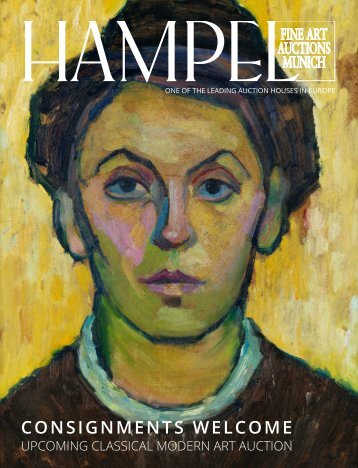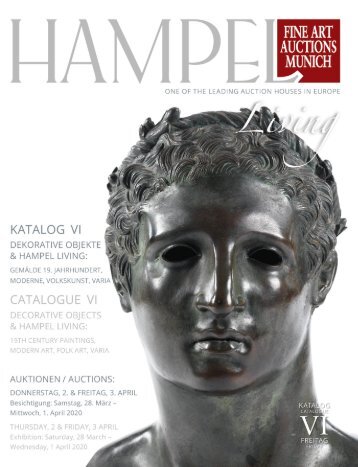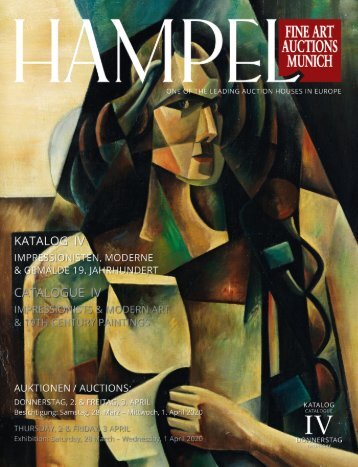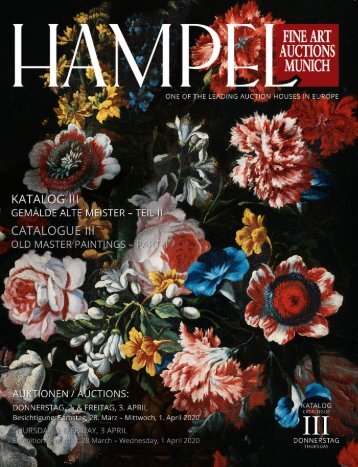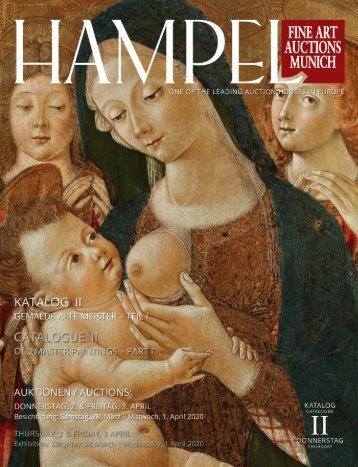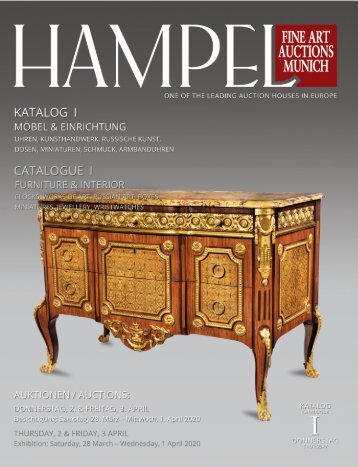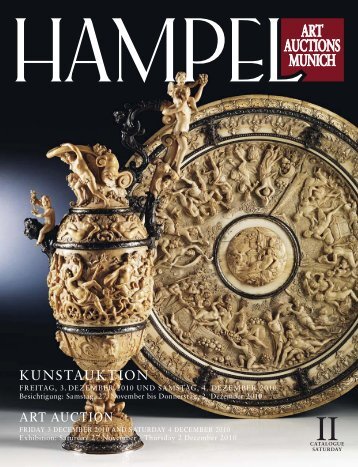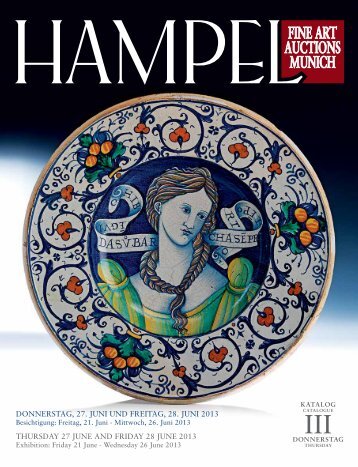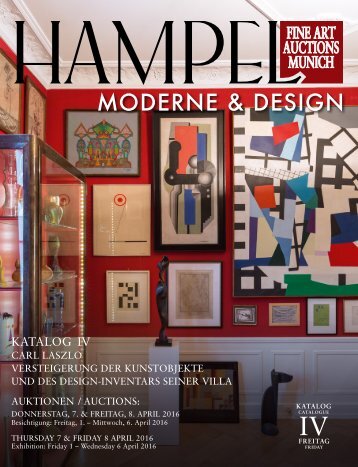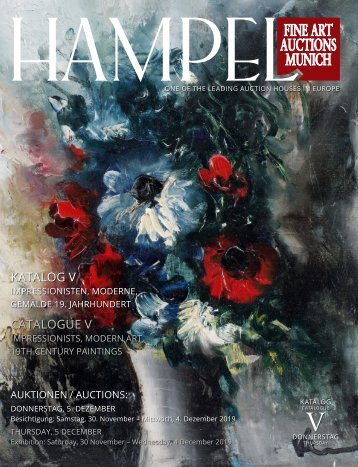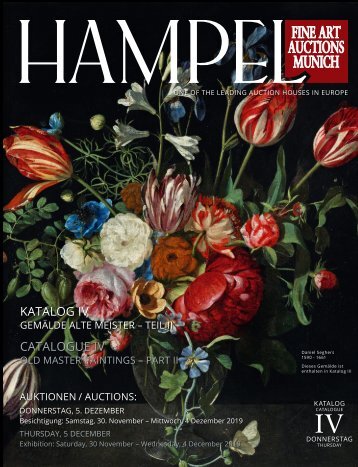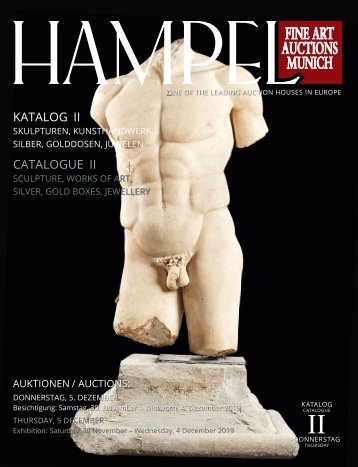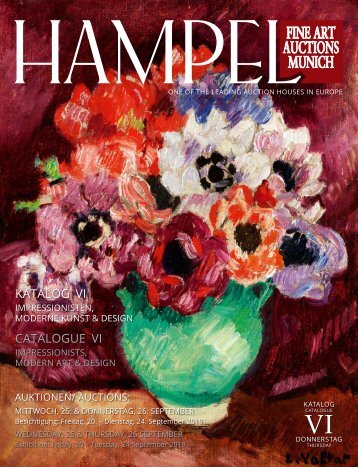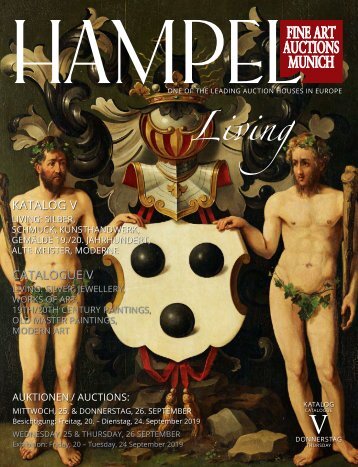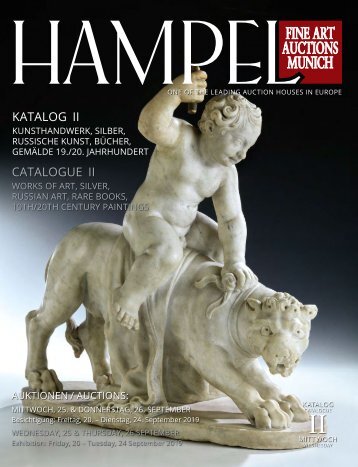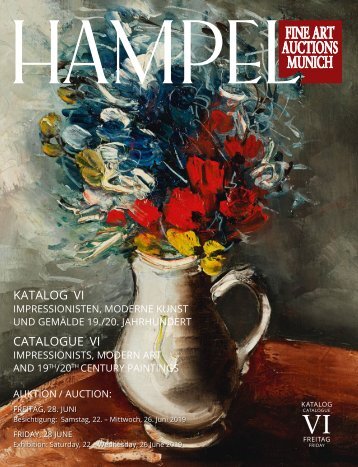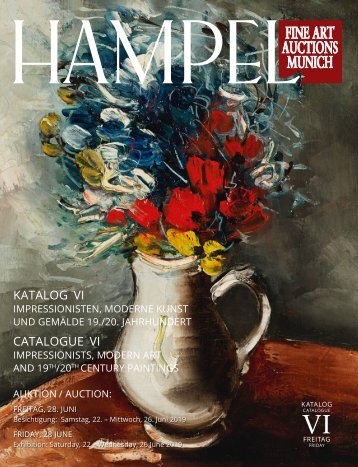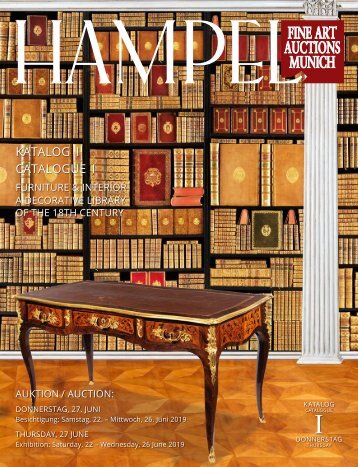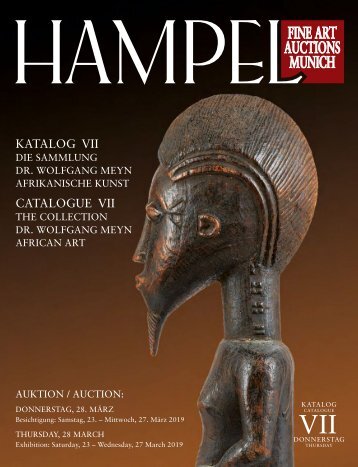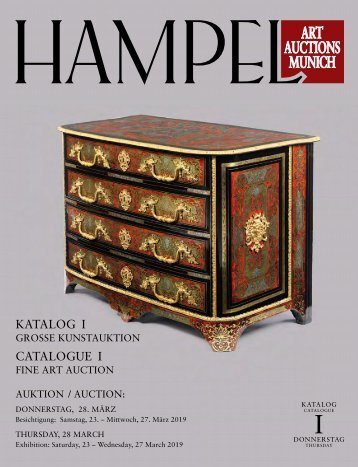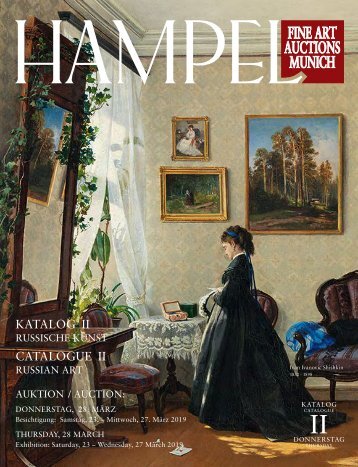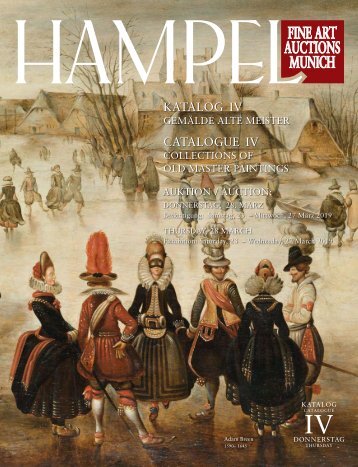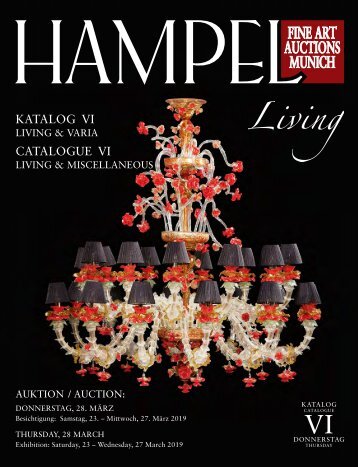Sammlung Majolika
505 Paar
505 Paar Majolika-Teller mit Grotesken-Dekor Durchmesser: 24 cm. Höhe: 4,2 cm. Ein Teller im Spiegel datiert "1526". Faenza, 1526. Paar kleine, tief gemuldete Teller auf kurzem Fußring mit breiter Fahne. Im Spiegel sind Trophäen zu sehen und bei einem der Teller ein Band mit der Datierung "1526". Die Wandung zieren ein breites Register in Hellblau mit weißem, zierlichem "U"- und "V"-Muster sowie ein Perlstab mit vier breiten Abschnitten. Die Fah ne ist mit Grotesken bemalt in Berettino- Malerei. Auf der Unterseite Dekoration "alla porcellana". Die Bemalung in Blau, Gelb und Weiß. Bruchrest., beide mit etwas Glasurabrieb an den Kanten. Anmerkung: Die Kombination von Berettino-Bemalung und Wappen oder Bildfeld war sehr beliebt unter den einflussreichen florentinischen Familien in den 1520ern und 30ern. (9300053) Pair of maiolica dishes with grotesque décor Diameter: 24 cm. Height: 4.2 cm. One of the plates dated 1526 at centre. Faenza, 1526. Pair of small, deep dishes on a short foot rings with broad borders. The centre of one depicts trophies and a band inscribed 1526. The inner wall is ornamented with a broad band in light blue with delicate white U and V motifs alter - nating with a bead and reel ornament in four wide sections. The borders are painted with grotesques in berettino style. The reverse of the dishes painted alla porcellana. Painted in blue, yellow and white. Cracked and restored, both plates show glaze wear on the rims. Notes: The combination of berettino painting and arms or a scene at the centre was very popular among the influential Florentine families in the 1520s and 1530s. € 6.000 - € 8.000 506 Großer Majolika-Platte mit Goldlüster Durchmesser: 43 cm. Deruta, erstes Drittel 16. Jahrhundert. Großer, gemuldeter Teller mit breiter Fahne und Lüs ter - dekor. Die Fahne ist überzogen mit einem geometrischen Muster, das besteht aus radialen Streifen und Ellipsen und je zwei Flächen mit Fischschuppen-Dekor und Blattgebinde. Im Fond erhält der Heilige Franziskus von Assisi die Stigmata. Er kniet auf einem gefliesten Boden und blickt empor zum schwebenden Christus am Kreuz. Im Hintergrund ragt eine Kirche hinter einer Bergkuppe hervor, fantastische Blumen wachsen auf dem Hang. Die Bemalung in Blau und Goldlüster. Sehr guter Zustand. Anmerkung: Im Hintergrund die Kirche von Alverna auf dem Hügel. Diese wurde dem Heiligen 1213 geschenkt und wur - de zu seinem Gebetsort. Nachdem Franziskus 1224 vierzehn Tage dort gefastet hatte, erhielt er seine Stig - mata. Die Darstellung war in Deruta verbreitet, da der Heilige Franziskus dort zu den meist verehrten Heiligen gehört. Die Darstellungsvorlage bildet ein anonymer Stich (Arthut Mayger Hind, "Early Italian Engravings", London, 1930, VII, Pl. 886). Literatur: Ein sehr ähnlicher Teller, vgl. Giuliana Gardelli, "Italika. Maiolica Italiana del Rinascimento", Faenza 1999, S. 415. Ein weiterer sehr ähnlicher Teller, vgl. Carola Fiocco et al., "Majoliques Italiennes Du Musée des Art Décora - tifs de Lyon", Dijon, 2001, S. 124, Nr. 84. Sowie vgl. Jeanne Giacomotti, "Catalogue des majoliques des musées nationaux", Paris, 1974, S. 187f, Abb. 604 und 605. Vgl. Katalog "Maioliche del Museo Civico di Pesaro", Bologna, 1979, Nr. 169, 173. (9300059) Large Maiolica dish with gold lustre Diameter: 43 cm. Deruta, first third of the 16th century. Large, shallow dish with wide border and lustre décor. The border is decorated with a geometrical motif comprising radial stripes and ellipses and two panels with fish scale and two panels with foliage wreaths. The centre depicts Saint Francis of Assisi receiving the stigmata, kneeling on a tiled floor looking up at Christ on the cross. In the background, a church is visible at the top of a hill and fanciful flowers grow on the slope. Painted in blue and gold lustre. Very good condition. Notes: The church in the background is Monte Alverna. This church was a gift to the Saint in 1213 and was his place of prayer. After fasting there in 1224 for fourteen days he received his stigmata. This illustration was popular in Deruta, where Saint Francis was one of the most revered saints. The model for this painting is an ano - nymous engraving, see Arthut Mayger Hind, Early Italian Engravings, London, 1930, VII, plate 886. Literature: For a very similar dish, see Giuliana Gardelli, Italika. Maiolica Italiana del Rinascimento, Faenza 1999, p. 415. For another very similar plate, see Carola Fiocco et al., Majoliques Italiennes Du Musée des Art Décoratifs de Lyon, Dijon, 2001, p. 124, no. 84. See Jeanne Giacomotti, Catalogue des majoliques des musées nationaux, Paris, 1974, pp. 187ff., nos. 604 and 605. See Catalogue Maioliche del Museo Civico di Pesaro, Bologna, 1979, nos. 169, 173. € 15.000 - € 20.000 22 For around 6,000 additional detailed images: www.hampel-auction.com
- Seite 1 und 2: Donnerstag, 27. Juni und Freitag, 2
- Seite 3 und 4: KATALOG I — CATALOGUE I JUNI-AUKT
- Seite 6: 503 Majolika-Krug mit gotischem Dek
- Seite 12: 507 Majolika-Henkelkanne Höhe: 29
- Seite 16: 509 Museale, große Majolika-Platte
- Seite 20: 511 Majolika-Albarello mit Doppelhe
- Seite 24: 514 Große Istoriato-Platte des Zen
- Seite 28: 516 Majolika-Istoriato-Alzata aus d
- Seite 34: 519 Majolika-Istoriato-Alzata aus d
- Seite 38: 521 Paar große, seltene Majolika-S
- Seite 46: 522 Majolika-Krug Höhe: 24,5 cm. D
- Seite 50 und 51: 525 Majolika-Krug mit spätgotische
- Seite 52: 527 Majolika-Istoriato-Schale auf F
- Seite 56: 530 Majolika-Deckelgefäß Höhe: 2
- Seite 60:
533 Großes Majolika-Rasier-Becken
- Seite 64:
537 Istoriato-Schale auf Fuß Durch
- Seite 68 und 69:
540 Majolika-Vase Höhe: 30 cm. Dur
- Seite 70:
542 Majolika-Bügelkanne wohl aus d
- Seite 73 und 74:
545 Majolika-Teller mit Wappen Durc
- Seite 76:
548 Äußerst seltenes Majolika-Aqu
- Seite 80 und 81:
552 Majolika-Apothekerflasche Höhe
- Seite 82 und 83:
554 Majolika-Albarello Höhe: 26 cm
- Seite 84 und 85:
556 Majolika-Crespina Durchmesser:
- Seite 86 und 87:
559 Seltene Majolika-Flasche in For
- Seite 88 und 89:
562 Majolika-Buckelschale mit Wappe
- Seite 90:
564 Majolika-Vase Höhe: 30,5 cm. D
- Seite 93 und 94:
565 566
- Seite 95 und 96:
569 Majolika-Alzata mit Wappen Durc
- Seite 97:
572 Paar Majolika-Istoriato-Teller
- Seite 101 und 102:
575 Majolika-Apothekergefäß Höhe
- Seite 103 und 104:
579 Majolika-Flasche Höhe: 28 cm.
- Seite 106:
582 Große Majolika-Buckelschale de
- Seite 110:
584 Majolika-Teller aus der Werksta
- Seite 114:
586 Seltene Majolika-Schale Höhe:
- Seite 118:
588 Majolika-Teller aus der Werksta
- Seite 123 und 124:
590 Großer Majolika-Albarello Höh
- Seite 125 und 126:
592 Paar große Majolika-Albarelli
- Seite 127 und 128:
596 Majolika-Figurengruppe Madonna
- Seite 130 und 131:
598 Majolika-Biscotteria Höhe: 16,
Unangemessen
Laden...
Magazin per E-Mail verschicken
Laden...
Einbetten
Laden...
HAMPEL KUNSTAUKTIONEN
HAMPEL Fine Art Auctions Munich
Schellingstr. 44 | 80799 München
Telefon +49 (0)89 / 28 804-0
office@hampel-auctions.com

